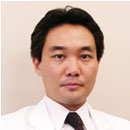
In the previous essay, I talked about pulmonary thromboembolism. This type of clot, which impedes pulmonary artery circulation, is most likely to have been formed in one of the deep veins in the leg. Muscle activity in the legs promotes contraction of the blood vessels, which pumps venous blood up to the heart. However, if the legs are inactive for long periods of time, circulation is impeded and a clot is likely to form.
Consider the sitting posture. The heart is located approximately 1m above the toes, so venous blood needs to be pushed back up to the heart by activating muscles in the legs. But if you are sitting and not moving, the venous blood won’t go up as high as the 1m required and blood flow becomes stagnant. This is how thrombus formation is initiated, as demonstrated by common symptoms such as swelling and redness in the affected leg.
If one’s activity is limited for long periods during a prolonged trip, circulation in the leg is limited and a clot may form. This may trigger a pulmonary thromboembolism in some cases. In 1977, a study was released which indicated that pulmonary thromboembolism after flying was more likely to occur in passengers in the economy class of the plane. As a result, this condition in which a passenger develops pulmonary thromboembolism due to inactivity in a narrow seat was dubbed Economy Class Syndrome.
But many travelers using various modes of transportation, such as airplane (other than economy class), bus, train, or ship, have reported to have developed venous thrombosis. Some people have also experienced it’s onset after a long automobile drive, therefore the name “Economy Class Syndrome” was changed to “Traveler’s Thrombosis”.
Pulmonary thromboembolism can happen to us not only from excessive sitting, but also just in daily life. What would happen if we were seated without moving for about two hours, for example? I conducted a test as follows; Healthy adult males, about 20 years of age, kept sitting and resting for two hours.
The blood viscosity in their arms and legs was checked before and after the sitting session. Blood viscosity is used as an index to measure the flow of blood. The results showed no difference in blood viscosity in the arms before and after sitting, but there was a significant increase in viscosity in the legs after prolonged sitting. Additionally, leg swelling was also observed, indicating that blood flow was restricted and a thrombus could potentially form. Situations such as this can happen even to those who are young and healthy if they don’t move their legs for a two hour period in the day. People with certain risk factors have an even higher probability of developing thrombosis.
Thrombosis prevention requires eliminating risk factors by improving lifestyle habits and treating predisposing diseases. Keeping adequate blood flow is also important, since blood stagnation raises the risk of thrombosis. The most effective preventive measure against thrombosis is to improve blood flow in the legs, because most venous thromboses are formed in legs. Swollen legs are a warning sign. If you have ever noticed your legs becoming swollen, that is a sign that you need to move your legs more frequently.
In the next essay, I would like to talk about improving eating habits as a means to prevent against thrombosis.
※ Leg: indicates entire lower extremity, including the thigh, leg region, and foot.

Masahito Hitosugi, M.D., Ph.D.
Professor, Department of Legal Medicine
Shiga University of Medical Science
Education:
Graduate School of Medicine, Jikei University, Tokyo, Japan, M.D., Ph.D. (Dr. of Medical Science), 2000.
Residency:
Kawasaki Municipal Hospital (Internal Medicine), Kanagawa, Japan, 1994-1996.
License and Certification:
License of Medical Doctor (No. 367818), Japan Ministry of Health, Labour and Welfare, 1994.
Authorized Dr. of Medical Autopsy (No. 7189), Japan Ministry of Health, Labour and Welfare, 1999.
Authorized Dr. of Forensic Medicine (No. 100), Japanese Society of Legal Medicine, 2002.
The 1st grade of the Examination of Proficiency in English for Medical Purposes (No. 3), The Japan Society for Medical English Education, 2008.
・No.2 What causes metabolic syndrome?
・No.1 Why has metabolic syndrome been drawing greater attention?
・No.6 Health foods to prevent thrombosis
・No.5 Natto, a preventive measure against thrombosis
・No.4 Improving eating habits to prevent thrombosis
・No.3 Have You Heard of Traveler’s Thrombosis?